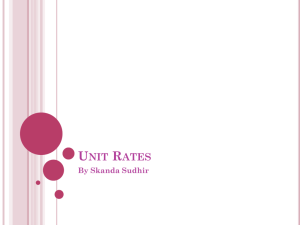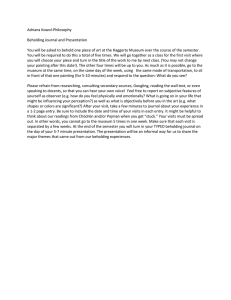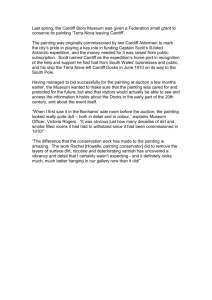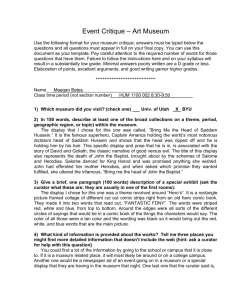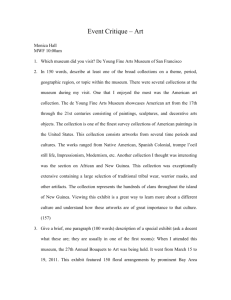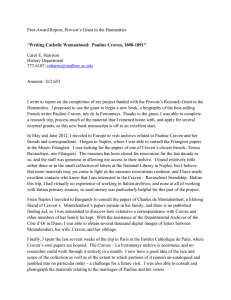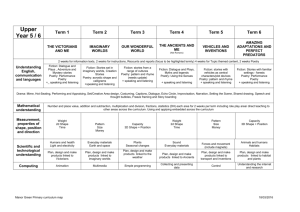Object Study Two
advertisement
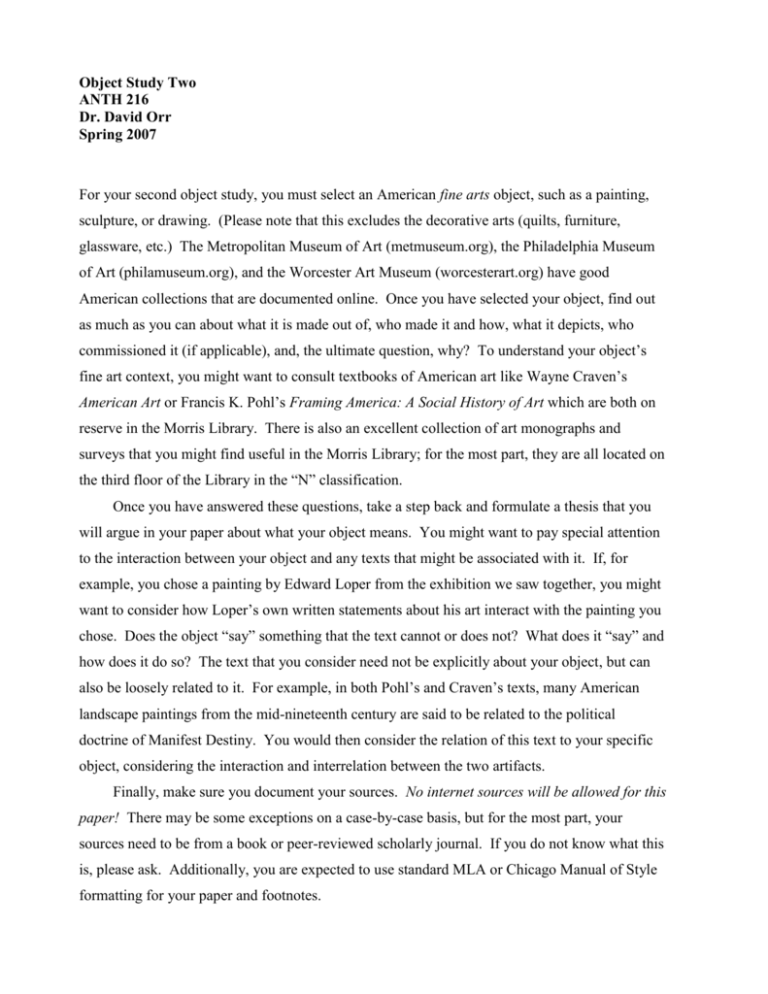
Object Study Two ANTH 216 Dr. David Orr Spring 2007 For your second object study, you must select an American fine arts object, such as a painting, sculpture, or drawing. (Please note that this excludes the decorative arts (quilts, furniture, glassware, etc.) The Metropolitan Museum of Art (metmuseum.org), the Philadelphia Museum of Art (philamuseum.org), and the Worcester Art Museum (worcesterart.org) have good American collections that are documented online. Once you have selected your object, find out as much as you can about what it is made out of, who made it and how, what it depicts, who commissioned it (if applicable), and, the ultimate question, why? To understand your object’s fine art context, you might want to consult textbooks of American art like Wayne Craven’s American Art or Francis K. Pohl’s Framing America: A Social History of Art which are both on reserve in the Morris Library. There is also an excellent collection of art monographs and surveys that you might find useful in the Morris Library; for the most part, they are all located on the third floor of the Library in the “N” classification. Once you have answered these questions, take a step back and formulate a thesis that you will argue in your paper about what your object means. You might want to pay special attention to the interaction between your object and any texts that might be associated with it. If, for example, you chose a painting by Edward Loper from the exhibition we saw together, you might want to consider how Loper’s own written statements about his art interact with the painting you chose. Does the object “say” something that the text cannot or does not? What does it “say” and how does it do so? The text that you consider need not be explicitly about your object, but can also be loosely related to it. For example, in both Pohl’s and Craven’s texts, many American landscape paintings from the mid-nineteenth century are said to be related to the political doctrine of Manifest Destiny. You would then consider the relation of this text to your specific object, considering the interaction and interrelation between the two artifacts. Finally, make sure you document your sources. No internet sources will be allowed for this paper! There may be some exceptions on a case-by-case basis, but for the most part, your sources need to be from a book or peer-reviewed scholarly journal. If you do not know what this is, please ask. Additionally, you are expected to use standard MLA or Chicago Manual of Style formatting for your paper and footnotes.

